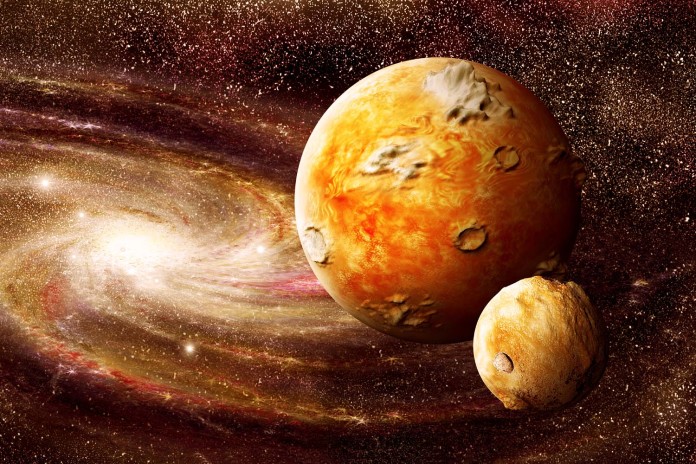
A structural failure in Mars’ moon Phobos will end up destroying the satellite. Phobos is currently closer to Mars than any other moon is to its planet, and Martian gravity is pulling it in. NASA suspects that the larger of Mars’ two moons will be pulled apart in about 30 to 50 million years.
Phobos Has Been Falling Apart for A Long Time
Mars’ moon Phobos is coming closer to Mars about 6.6 ft every hundred years, and in progression, it will ultimately destroy the satellite. The moon is currently only 3,700 miles above the Martian surface, and scientists share that it’s likely that the moon is already starting to fall apart.
The grooves on Mars’ moon Phobos were long believed to be fractures initially caused by the impact that created the Stickney crater, which was so powerful it nearly destroyed the satellite. However, these grooves don’t radiate outwards of the crater, but from another nearby area. A theory that explains this reads that the grooves have been produced by impacts from objects ejected from Mars, or that the grooves are actually cracks that form when Mars’ moon Phobos is deformed by tidal forces, produced by the gravitational pull between the planet and its larger moon.

Mars’ Moon Phobos is Not Alone
This same gravitational pull happens between the Earth and the Moon, and it is what makes tides in the oceans, and it’s also why the Earth and the Moon are egg-shaped rather than round.
These tidal forces pulling at Mars’ moon Phobos are perfectly capable of fracturing the surface of the satellite, and judging by the timeline of the appearance of these grooves, which shows that some are older than others, this is an ongoing disaster. Phobos is a calamity lying in wait.
The same thing could happen with Triton, Neptune’s moon, which is falling inward and is similarly ‘grooved’ to Mars’ moon Phobos.


















